Those who are novices in early Iowa history will often run across the city name of Bloomington, Iowa and ask the question…

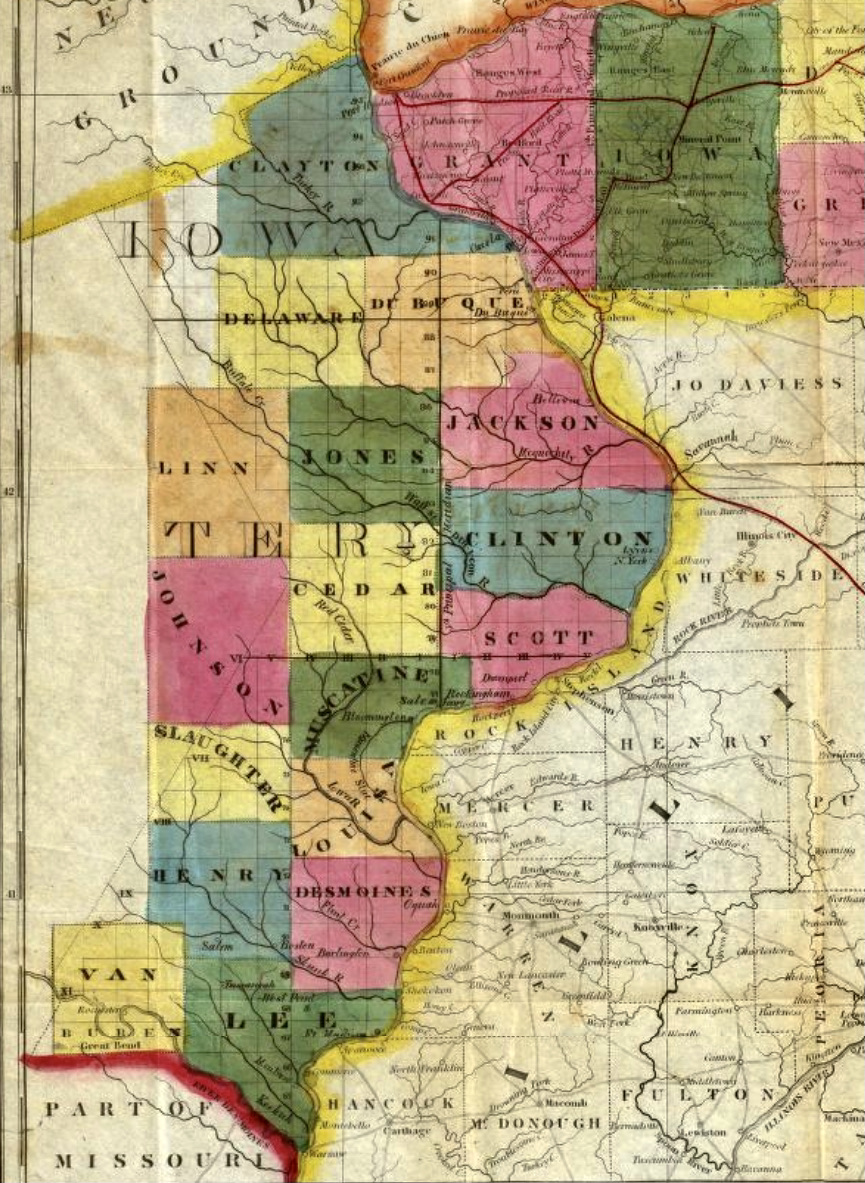
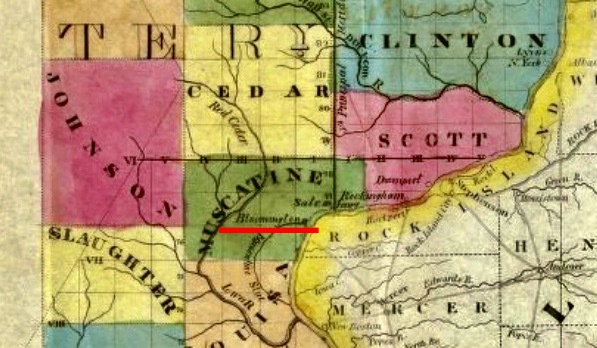
To answer that question – we must pull out a map of Iowa that was printed prior to 1850. See it there (above right) tucked away in Muscatine County – located on the Mississippi River? Which, now, brings us to our next question…

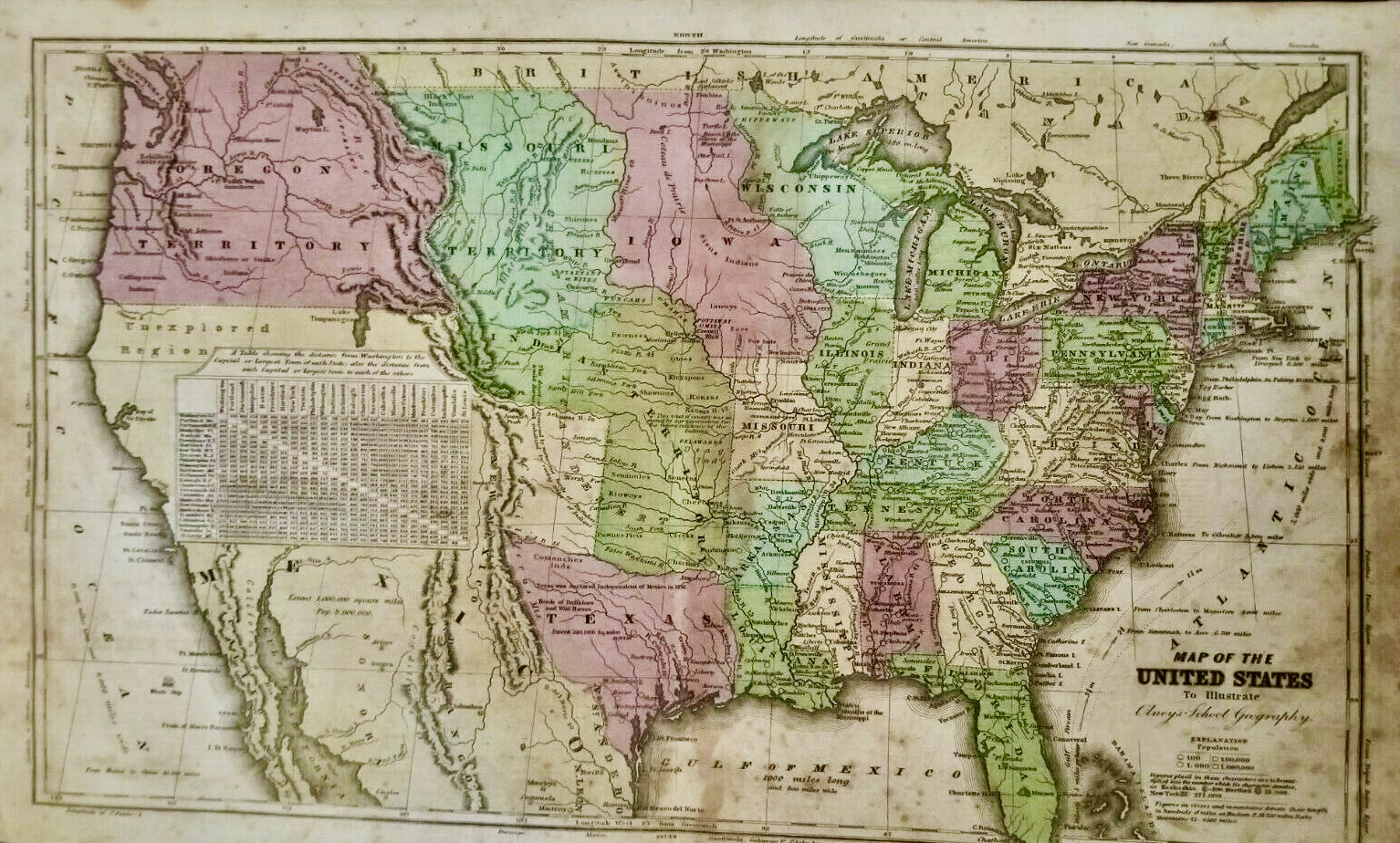
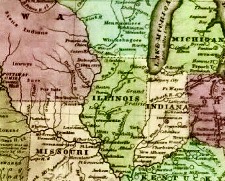
The short answer? In 1850, the good people of Bloomington, Iowa were forced to change their city’s name due to the increasing confusion surrounding U.S. mail delivery to three different Midwestern cities: Bloomington, Indiana – Bloomington, Illinois and Bloomington, Iowa.

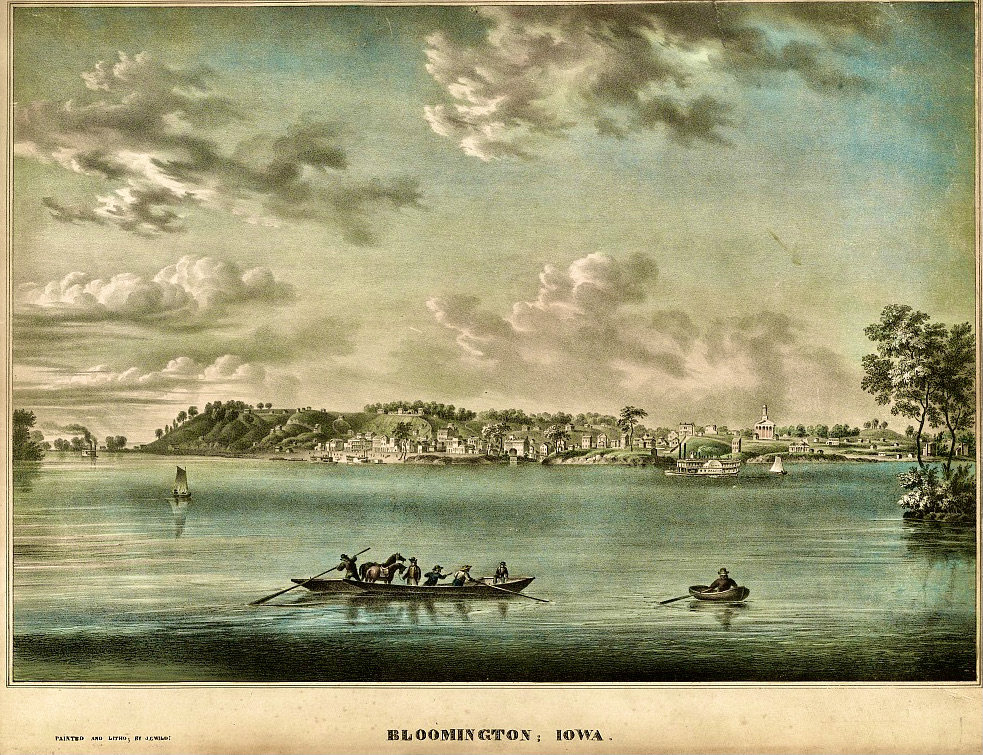
So, after fifteen-plus years of confusion, Bloomington adopted a new name – Muscatine.
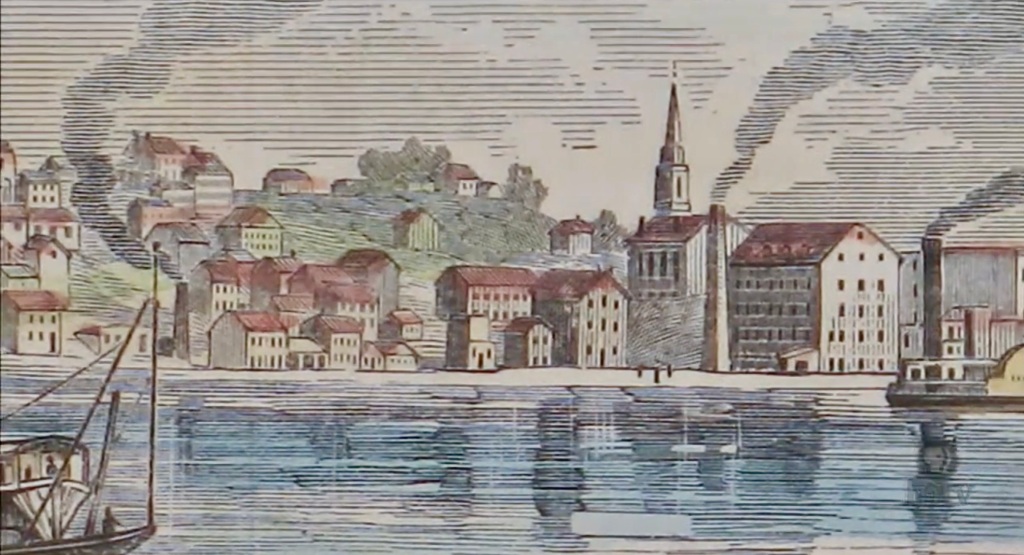
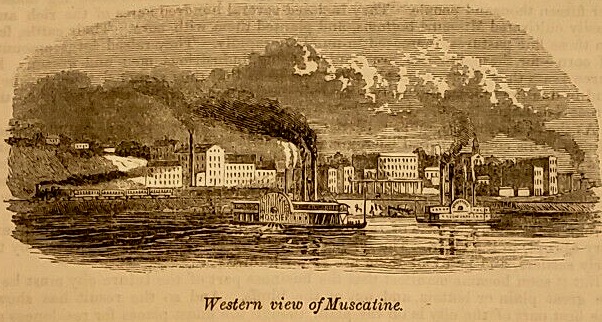
Read more about the earliest days of Bloomington, Iowa here…

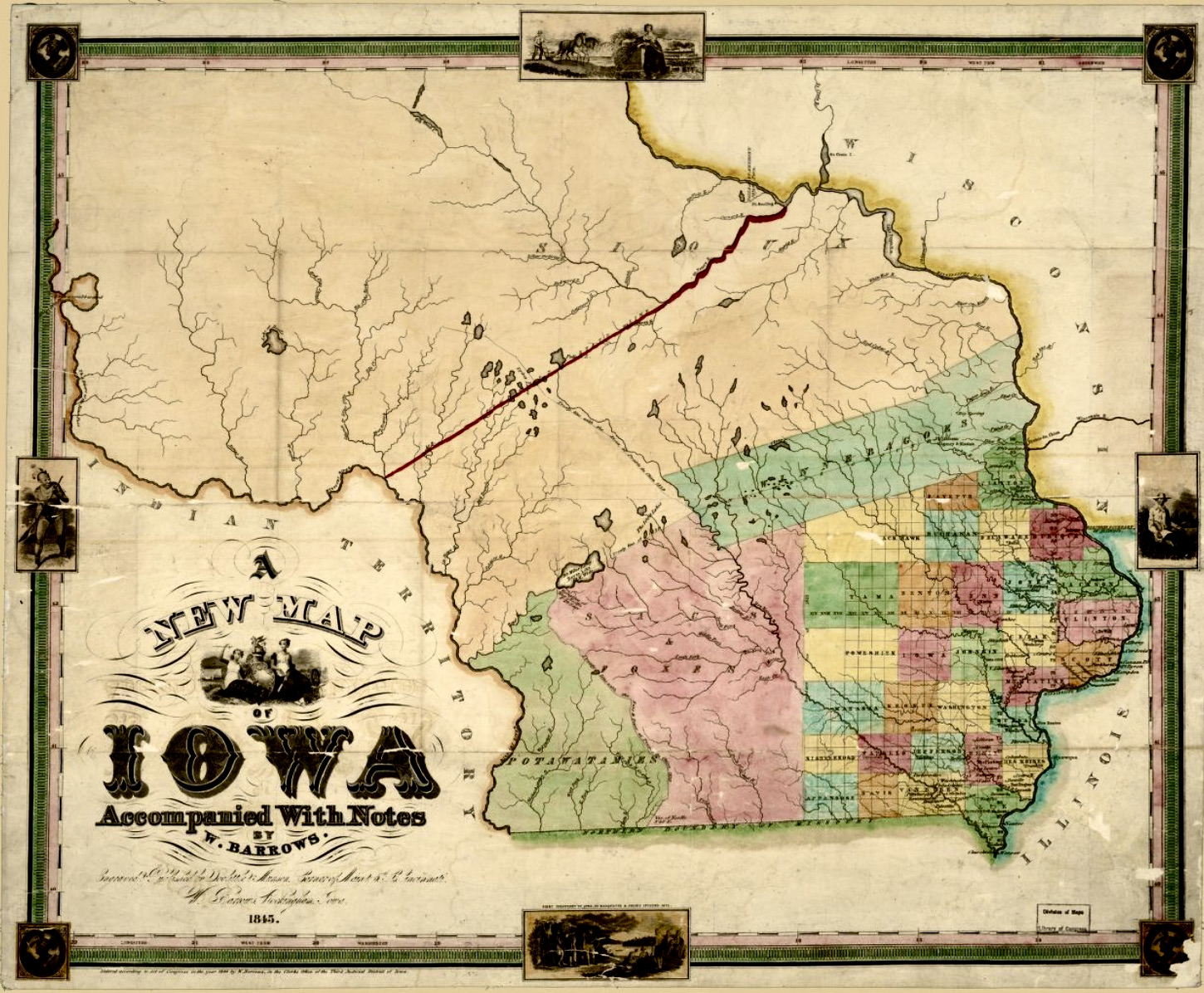
After Iowa became a U.S. Territory in 1838, Bloomington was incorporated on January 23, 1839. Later that year, on May 6, its first community officer, Joseph Williams (above), was elected, and the population, at this time, was 71, with 33 buildings making up the entire town. By November, there were 84 houses in the community. Which now brings us to 1845 and to our rare postal cover headed to Bloomington…

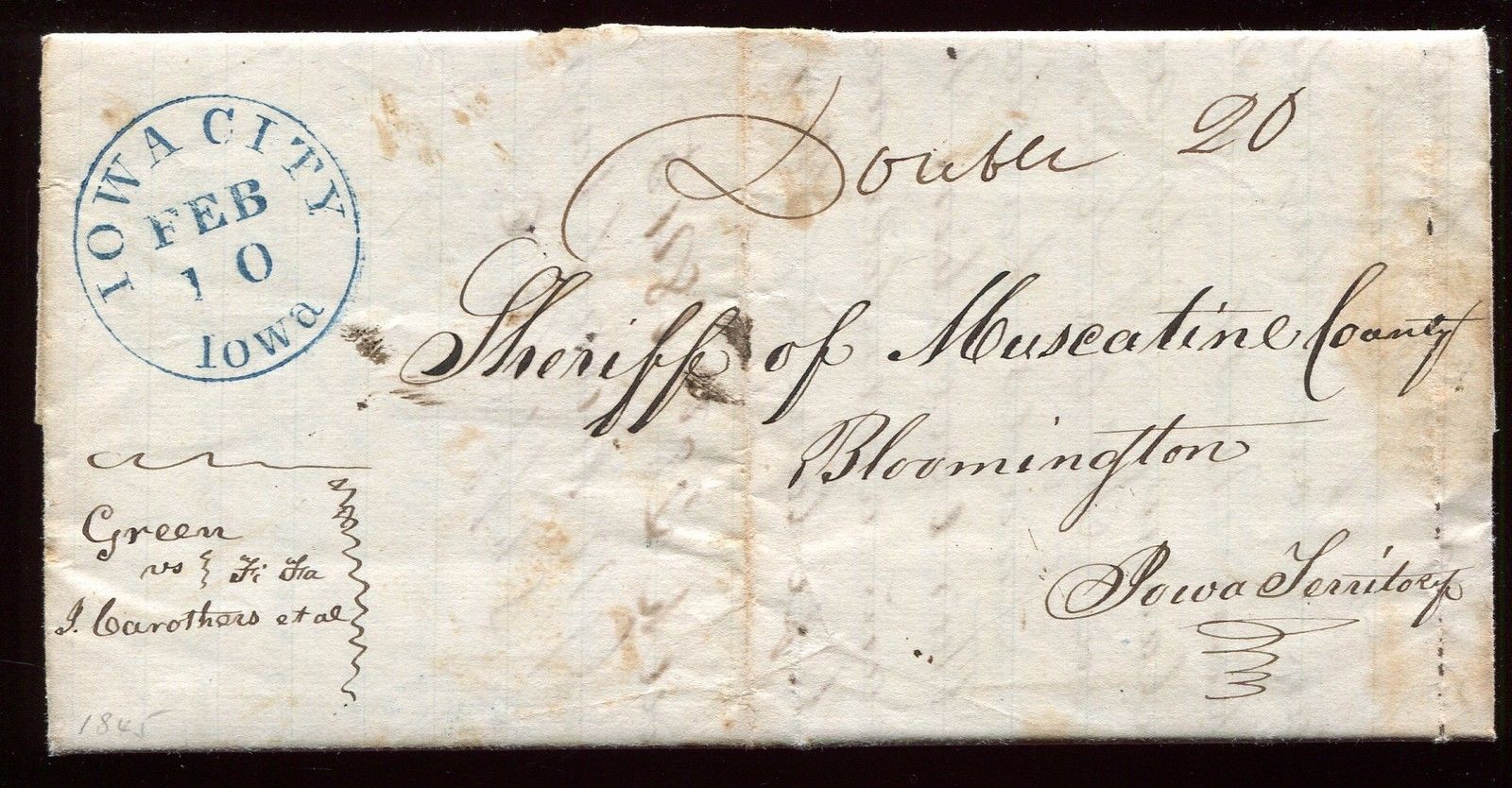
Our rare stamp-less letter set is a two page letter/court document from the District Court in Johnson County – Iowa Territory and was most likely drawn up in the Old Stone Capitol in Iowa City.

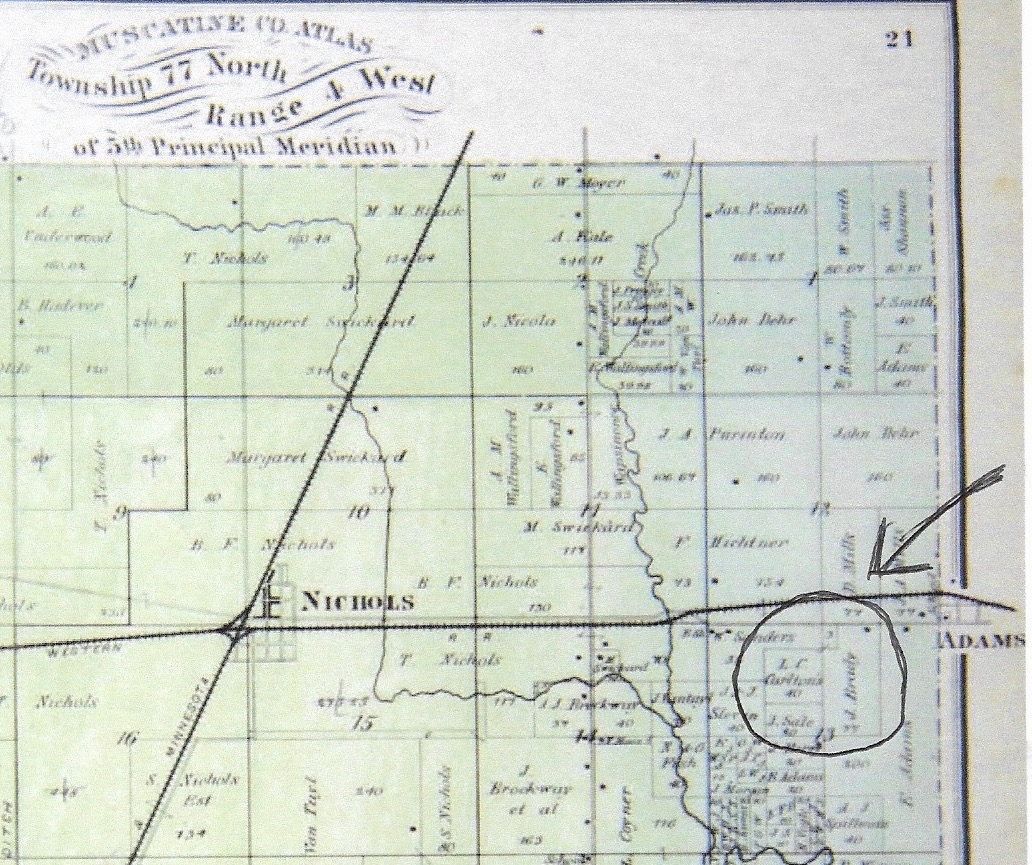
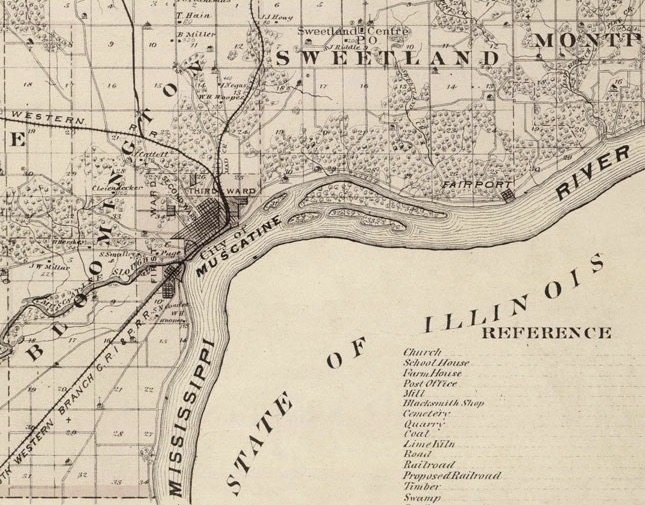
The issue at hand is money still owed for the purchase of two pieces of land – 160 acres – in Muscatine County (see above) – near Nichols, Iowa – first negotiated in January 1843.

This official letter is written by and has the wax seal of Stephen B. Gardner – Clerk of the District Court, Johnson County, Iowa Territory, and includes the embossed seal of the Supreme Court of Iowa Territory, witnessed by the Honorable Judge Joseph Williams on February 7, 1845. Our set also includes a third page – a response from Sheriff George W. Humphrey, signed March 28, 1845. Read more about “stamp-less” mail and how postage rates were determined.

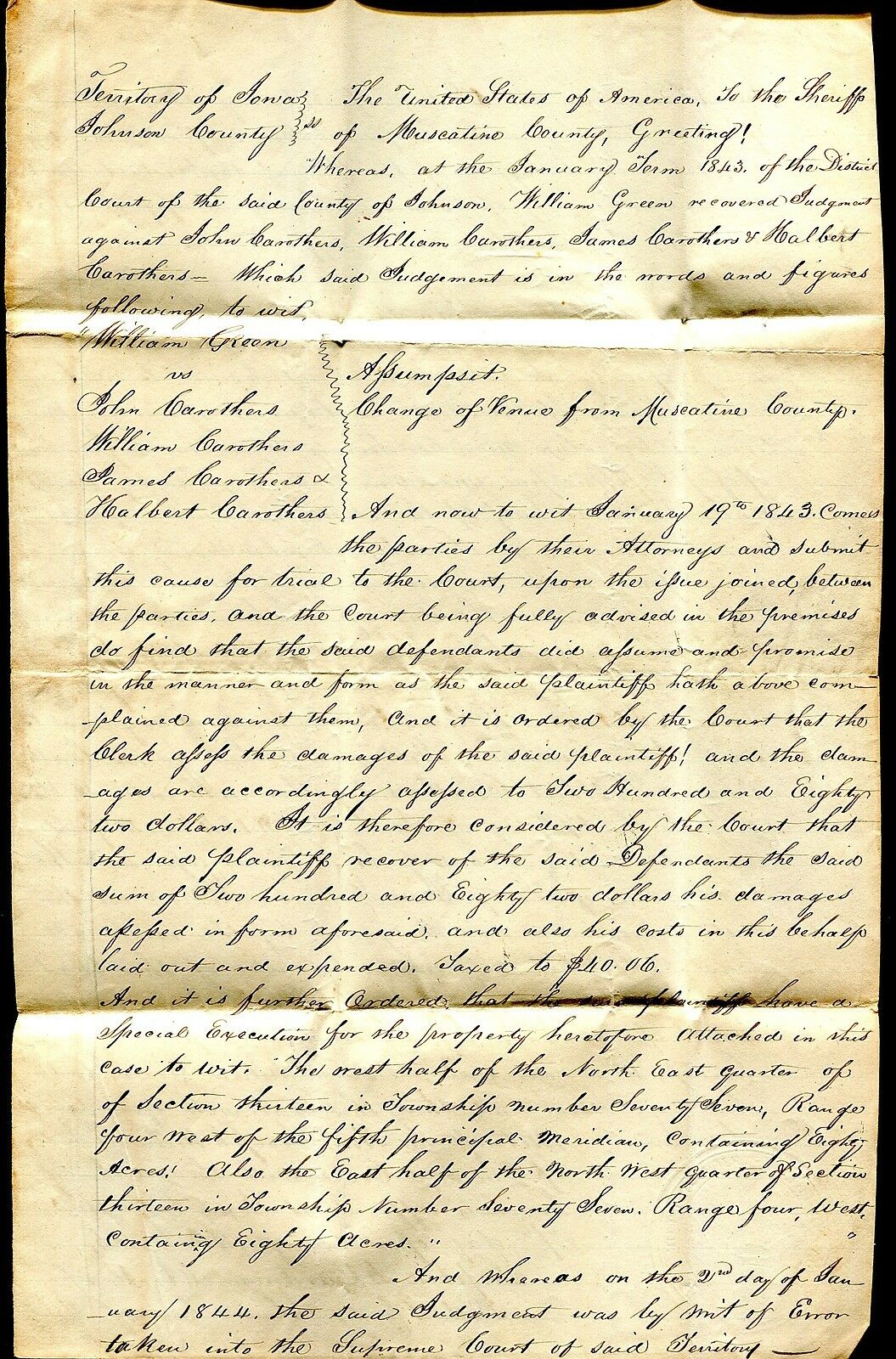
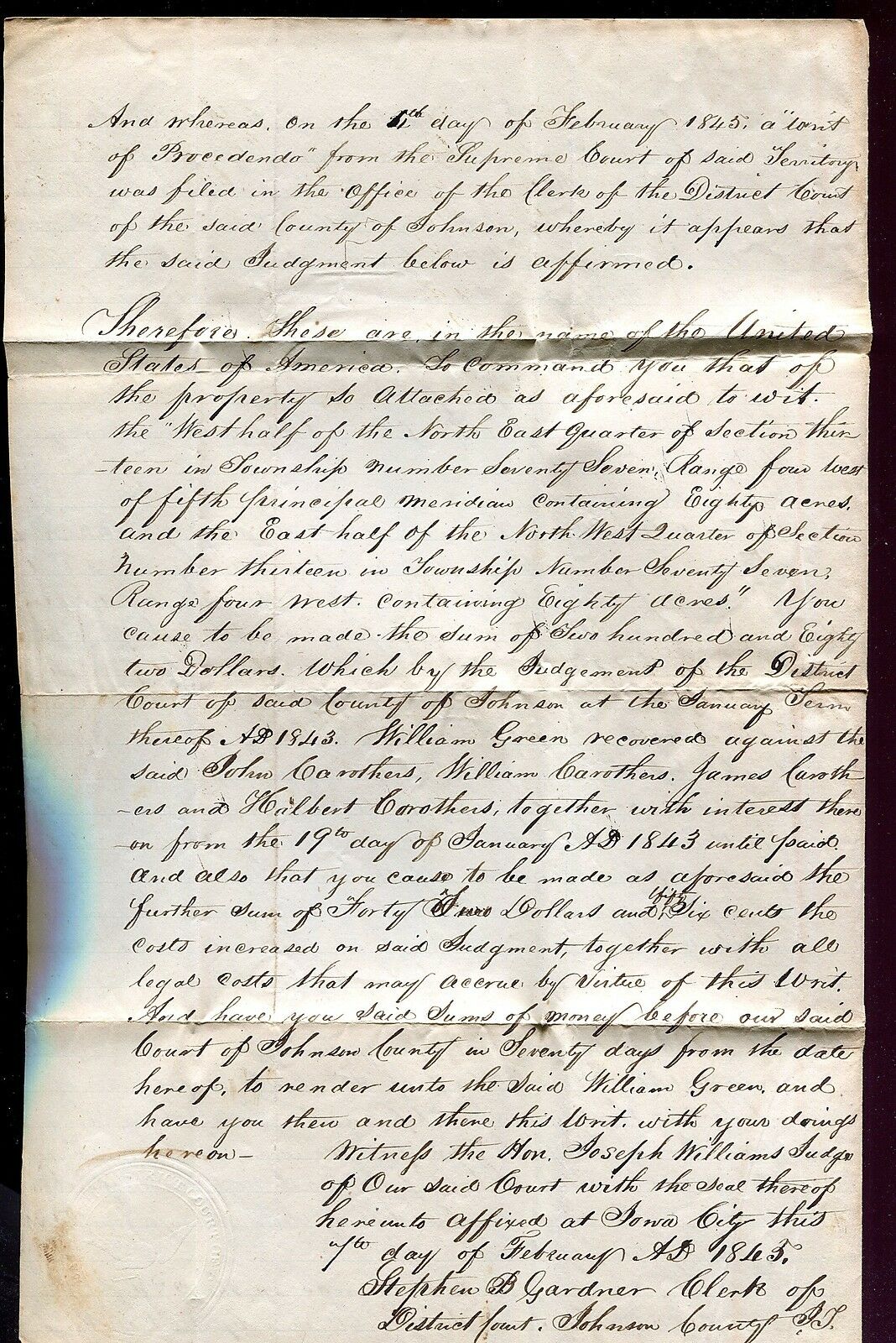
William Green vs. four Carothers brothers are in a land dispute – 160 acres – in Muscatine County. The case was taken to the Iowa Territorial Supreme Court in Iowa City for judicial review and our February 7, 1845 2-page letter is directing the Sheriff in Muscatine County to execute the Court’s decision in favor of the plaintiff, stating that the Carothers must pay Green $282 in damages, plus $40.06 in taxes, plus any additional court costs that accumulate between the writing of this letter and the resolution of the issue – up to 70 days. The sheriff is being drawn into this court case by order of the Judicial Court of the Territory of Iowa.
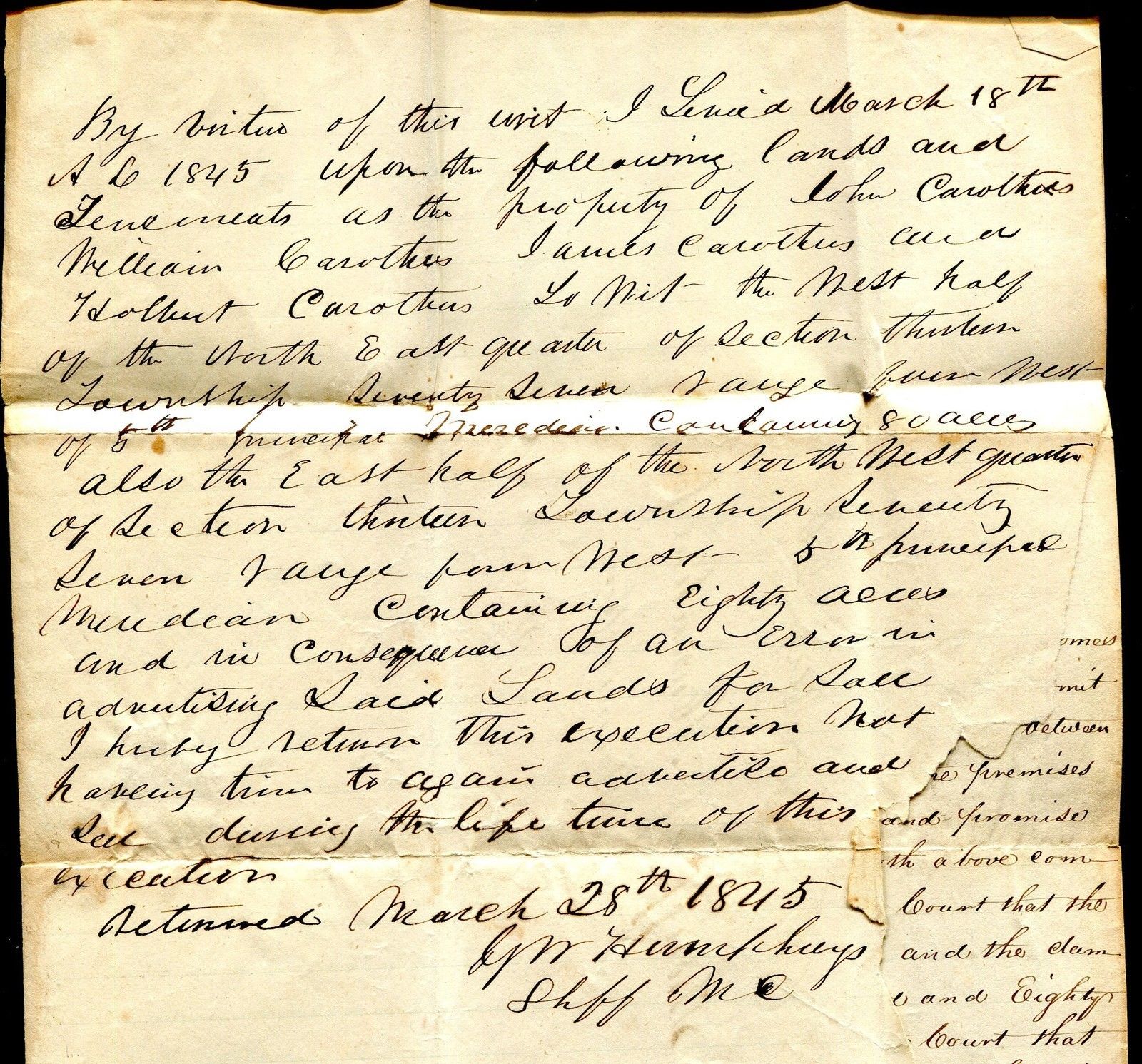
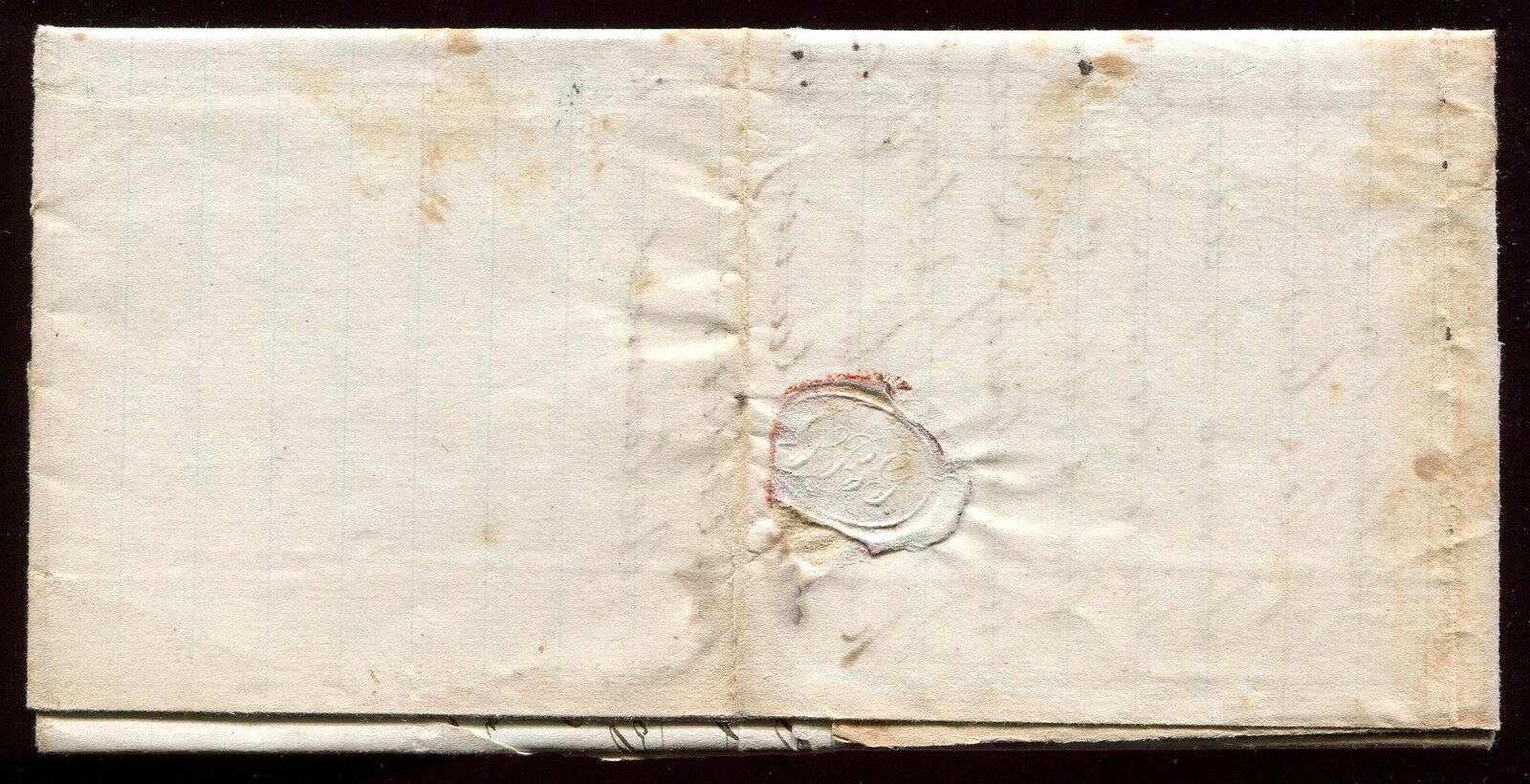
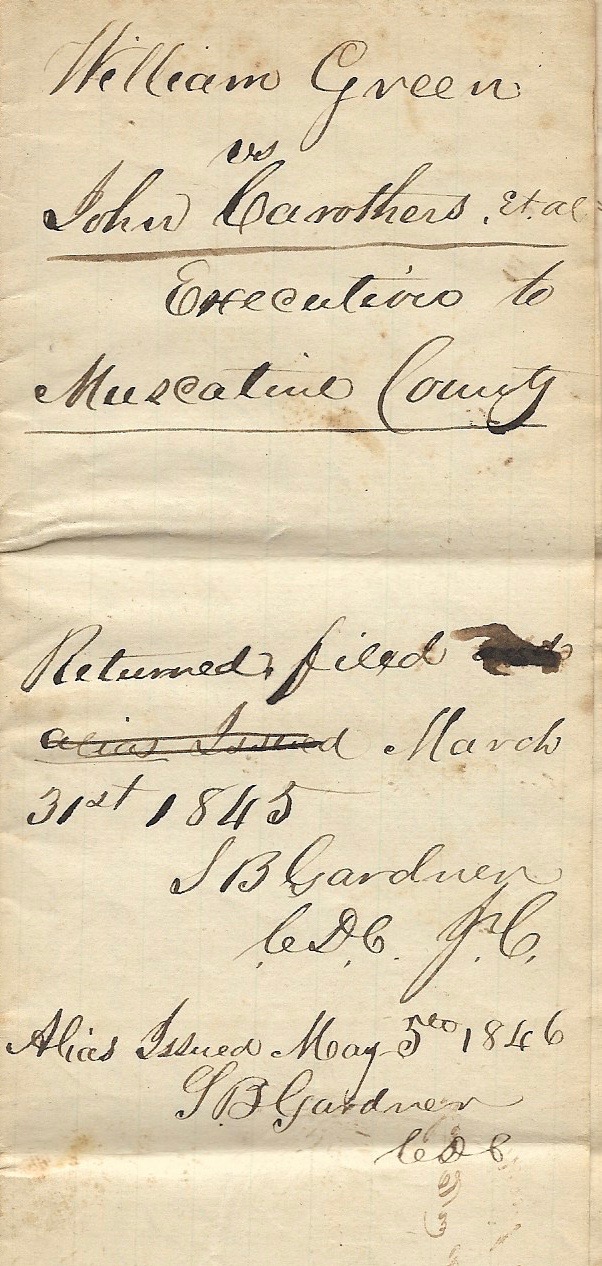
The third page is a short response written on the back of the original letter by Muscatine County Sheriff George W. Humphrey. Humphrey states that after visiting the defendants in question – March 18, 1845 – he has decided that there has been an “error in advertising” and because of an inadequate amount of time to correct the issue before the execution order expires – 70 days from the date of the original letter – he did not proceed with the court’s order. Humphrey signed March 28, 1845 and returned to Iowa City. The final piece of info on this letter/summons is the notation of S. B. Gardner on the back side of the letter. Gardner, upon the receipt of Sheriff Humphrey’s response, filled the paperwork under the title: William Green vs. John Carothers, Et al. Execution to Muscatine County, recording the date of the letter return – March 31, 1845.

On May 5, 1846 – over one year later – Gardner returned to the file and issued an alias. An alias refers to the process of issuing a second execution after an earlier process has failed for some reason to accomplish its purpose. In other words – this matter is going back to Bloomington! And with a new sheriff in town, maybe something will finally happen!

Stephen B. Gardner – the author of our 2-page letter, was Clerk for the Iowa District Court, and Clerk for the Johnson County Board of Commissioners, living in Iowa City with his family during the 1840’s and 50’s. The 1850 US Census – Iowa City – Johnson County – shows: Stephen B. Gardner, age 46, clerk of District Court, born in N. Carolina; Margarett, age 52, born in Maryland; Barbary Nickols, age 12, born in Pennsylvania. Other records show that Stephen B. Gardner was one of twenty-five trustees appointed in April 1843 to oversee the formation of Iowa City College, a seminary of higher learning for “the benefit of the youth of every class of citizens, and every religious denomination, who shall be freely admitted to equal advantages and privileges of education, and to all the literary honors of said college.” Stephen B. Gardner appears in the story of Iowa City historian, F.W. Irish. By the 1870’s, Gardner had moved to Kansas as was the recipient of Irish’s gentle kindness and generosity. Read more here.

George W. Humphrey – author of the return letter, was Sheriff of Muscatine County from 1844 through 1845.

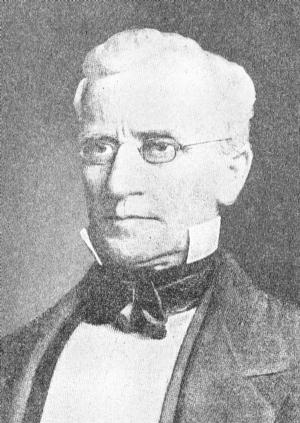

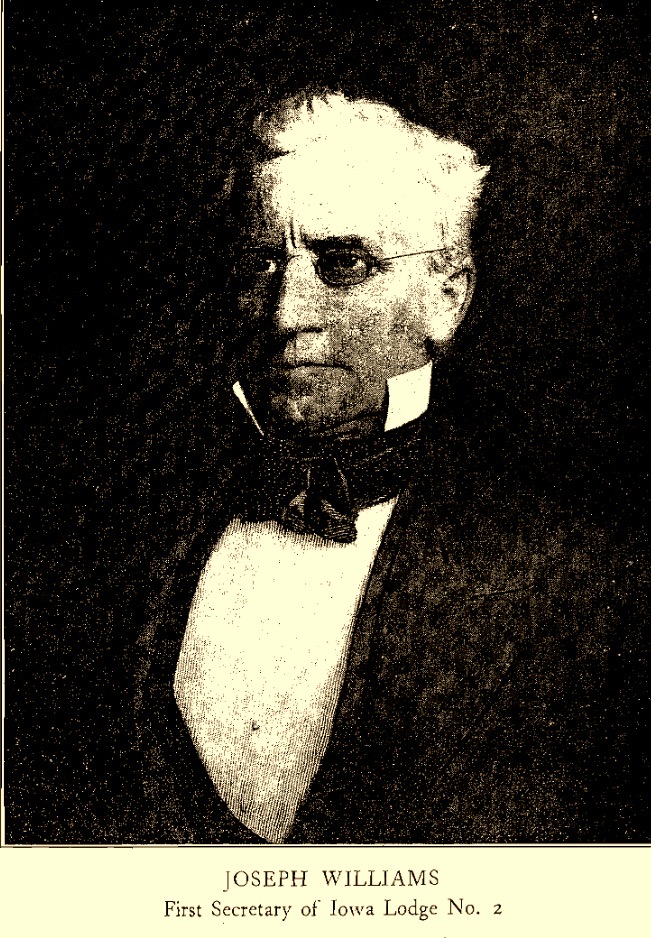
Honorable Judge Joseph Williams – official witness to the letter written by Clerk Stephen B. Gardner, served on the Iowa Territorial Supreme Court from the formation of territory in 1838 and on the State Supreme Court until January 25, 1848; and again from January 15, 1849 until January 11, 1855. For seven years he was Chief Justice. Read more here.

Born December 8, 1801, at Huntingdon, Pennsylvania, Joseph Williams studied law in the office of Chauncy Forward and was admitted to the bar in his native state where he practiced law for a time at Somerset. Upon his appointment to the Iowa Territorial Supreme Court in 1838 by President Van Buren, he located in the new Territory of Iowa at Bloomington (Muscatine).
Enjoy these early Iowa stories from Judge Williams – as shared in his biographical information –

The 1838, 1839, and 1840 court sessions were held at the territorial capitol in Burlington. The 1841 through 1854 sessions were held in Iowa City. In 1855, the 5th General Assembly voted to change the location of the capitol to Des Moines. In 1857, he was appointed, by President Buchanan, a Supreme Court judge of Kansas Territory and later, by President Lincoln, as Judge of the United States District Court at Memphis, Tennessee.
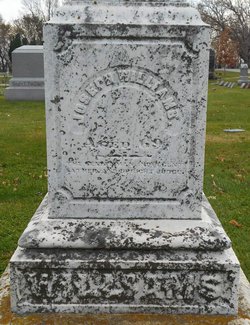

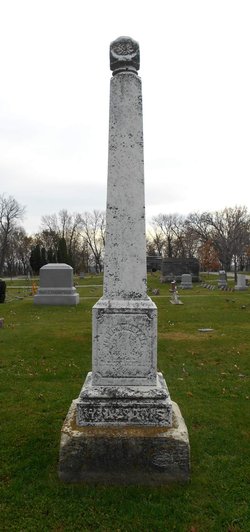
Justice Joseph Williams died at Fort Scott, Kansas, March 31, 1870 (age 69), and is buried, alongside his wife, Mary Rogers Meason Williams, in Greenwood Cemetery in Muscatine. In the 1924-25 Yearbook of the Old Settlers’ Association of Johnson County, this kind review was written about Judge Williams…

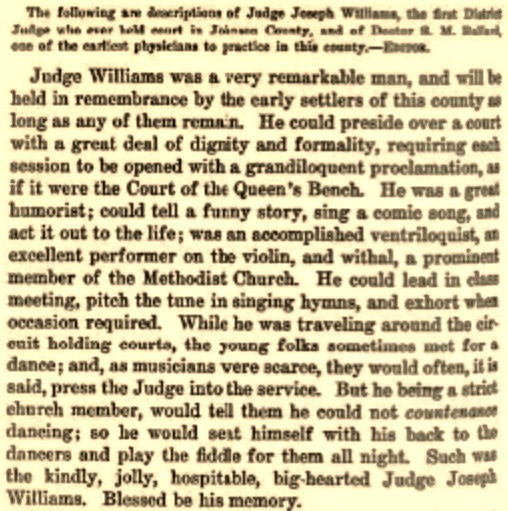
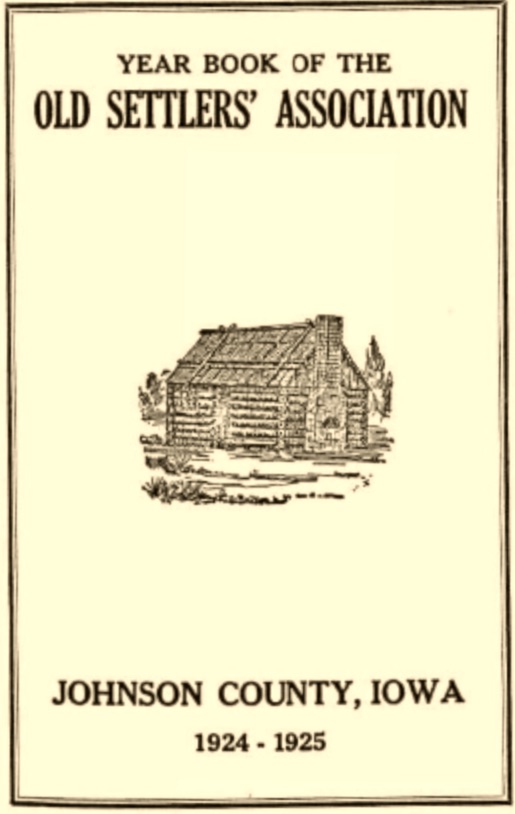


Kudos to the amazing resources below for the many quotes, photographs, etc. used on this page.

Muscatine History, City of Muscatine website
Joseph Williams-Supreme Court Justice, Iowa Judicial Branch
Judge Williams, The Scott County Bar, Chapter XVIII, Scott County History, IAGenWeb
History of Grand Lodge of Iowa, A. F. and A. M., Joseph E. Morcombe, Grand Lodge of Iowa, 1910
Judge Williams, editor, OSA 1924-25 Yearbook, pp 36
Joseph D. Williams, Find-A-Grave
Click here to go on to the next section…
Click here for a complete INDEX of Our Iowa Heritage stories…

